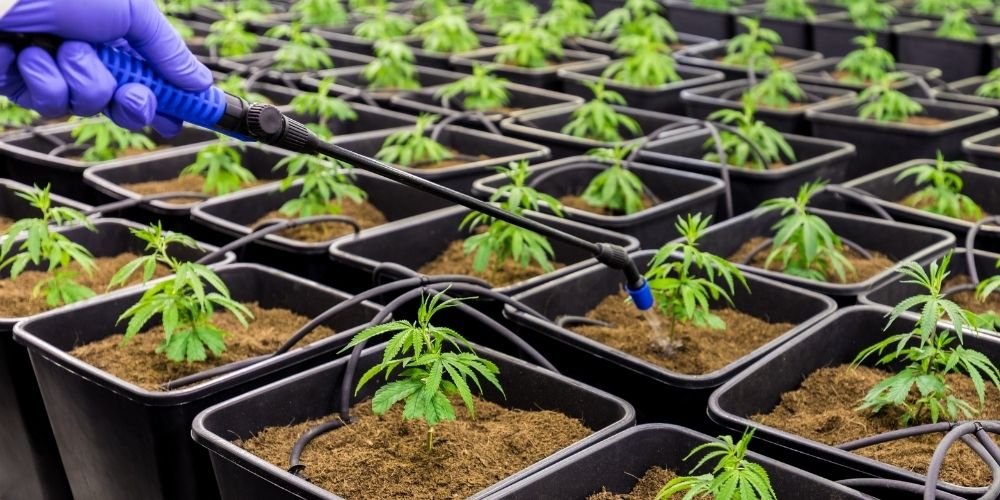From Seed to Smoke: How to Grow and Consume Your Cannabis!
Ready to grow your own cannabis? Cannabis growing is a mix of art and science, and it can be exciting to work your way through all the steps. Let’s uncover the whole journey of cannabis, from seed to smoke. Here’s how to grow and consume your cannabis.
1. Selecting Seeds
Selecting the best cannabis seeds is a surefire way to get your crop off to a healthy start. However, the sheer number of options is staggering. Sativas, Indicas, hybrids, auto-flowering varieties—the choices are impressive. Think about what strains you’ve enjoyed smoking in the past, but do some research to find strains and cannabis types that are easy to grow.
Also, consider your growing circumstances. Are you growing indoors or outdoors? How much space do you have? What kind of climate can you logically provide? When you’ve narrowed down your choices, pick seeds from a reputable place and test them for viability. The best seeds have a solid shell, don’t burst open when pressure is applied, and don’t show any signs of mold growth or degradation.
Pro Tip: Remember, some strains are harder to grow than others, while others are hardy plants that mature and flower quickly. Sativa varieties also grow tall and lanky compared to Indica-dominant strains, which can be more of a challenge indoors.
2. Germinating Seeds
Seeds need the right temperature, water, and the ideal environment for germination[1]. Some growers choose to germinate right in the dirt, but most prefer to germinate before their seeds ever touch the soil by using the paper towel method.
For paper towel germination, you simply place your cannabis seeds on a moist paper towel situated on a plate. Place a second inverted plate on top of the other plate to retain moisture. Position your plates in a warm and dark place, and the seeds will typically germinate within a few days, but it may take up to a week.
While waiting for your seeds to sprout, go ahead and gather what you need to create a conducive growing environment for your soon-to-be sprouts. Learn the fundamentals of growing cannabis, such as light, growing mediums, air flow, water, temperature, nutrients, and humidity. Indoor growing gives you the liberty to control each factor, while outdoor growing means you’re at the mercy of nature for most factors. In either case, the more prepared you are with the right setup and supplies, the more likely you will have a satisfactory yield.
Pro Tip: Be sure to keep your paper towel lightly moistened throughout the germination process. If the environment gets too dry, the seeds will not sprout.
3. Planting Your Germinated Cannabis Seeds
Once you have a nice little taproot and the seed is completely broken open, you’re ready to get your infant plants into growth medium. Plant the sprouts into a growth medium, taproot down, about half an inch beneath the dirt. Cover loosely with soil, and moisten the growth medium well as they work their way to becoming tiny seedlings.
Your cannabis plant is considered a seedling when the plant breaks the surface of the soil, and you see the very first set of leaves fully develop. From this point, the seedlings will start to grow and develop more rapidly due to photosynthesis in the vegetative stage. Therefore, your environmental factors like temperature, light, and humidity become extremely important.
Pro Tip: If you’re growing cannabis indoors, stick closely to 18 hours of light and 6 hours of lights off during vegetation[2]. Some slight variances in light provision are OK but keep a routine as much as possible. Some growers even opt for all light all the time during vegetation, which may speed growth rates but can also stress the plant if it is not also provided the proper nutrient levels to support sustained growth.
4. Growing and Maintaining Cannabis Plants
As your cannabis plants grow, your primary focus will be on providing everything the plant needs to continue to produce stems and leaves. However, some general trimming and maintenance may be warranted. Trimming and pruning are done to remove damaged foliage, support airflow, and keep the plant’s energy delivered to the essential parts of the plant.
The vegetative stage of cannabis growth can last for several weeks, but you can also manipulate how long vegetation lasts by switching up the light cycles. Generally, cannabis will enter into its flowering stage when light exposure starts to wane. Therefore, if you are satisfied with the size of your plants after several weeks, you can switch to 12 hours of light and 12 hours of darkness to encourage flowering.
Flowering is a fascinating, exciting process to watch. You’ll spot tiny clusters of blooms forming at internodes on the plant. These little clusters will continue to grow and swell over the course of anywhere from 8 to 11 weeks. Pistils and resinous trichomes will also start to emerge as the flowers mature, which means harvest time is growing closer.
Pro Tip: Autoflowering plants do not rely on light to enter the flowering stage but age. Therefore, they will begin producing buds at a certain point of age regardless of light provision changes.
5. Harvesting Cannabis
Timing to the end of the flowering stage varies by plant species, so it is better to look at certain characteristics that signal your buds are ready for harvesting. You’ll know it is time to harvest your buds when a few things happen:
- The majority of the pistils will take on an orange or amber color
- The pistils will start to curl inward
- Trichomes will transition from clear to a milky white or amber color
If your plant is showing all these characteristics, grab a pair of pruning shears and get started. Harvesting will involve breaking down the plant into smaller branches and allowing those branches with the buds intact to dry for about 10 to 14 days in a dark space with humidity at around 50 percent and your room temp at roughly 68 degrees Fahrenheit.
After the initial drying run, you can clip the buds from the branches and place them in sealed jars to cure them. Pick a dark place for curing to avoid sunlight exposure. During this phase, open each jar once daily for about an hour to allow accumulated gasses and moisture to escape. After about two weeks, your buds are ready for long-term storage and further curing undisturbed.
Pro Tip: If you don’t have a lot of space for drying, cut the buds from the branches and lay them in a single layer on a screen instead.
6. Enjoying Your Harvest
After all your hard work growing cannabis, there’s no greater reward than breaking out your preferred type of glass pipe be it bubblers, one hitter, bong, or something else to partake in the fruits of your labor. You can read here why you should choose glass to enjoy your harvest. Avoid Pull out one of your cured buds, grind it to your preferred consistency, and fill your glass pipe. There’s something so satisfying about that first clean hit of your home-grown in your favorite glass pipe.
Read: 7 Reasons Why You Should Invest in Glass Pipe – Chameleon Glass
Looking to add a special glass pipe to your collection while waiting for your harvest? Be sure to take a look at the extensive collection of glass pipes available at Chameleon Glass.
Meanings
1. Germination: The process by which a plant grows from a seed into a seedling.
2. Vegetation: The phase when cannabis plants grow leaves and stems before they start flowering.



Leave a Reply
You must be logged in to post a comment.